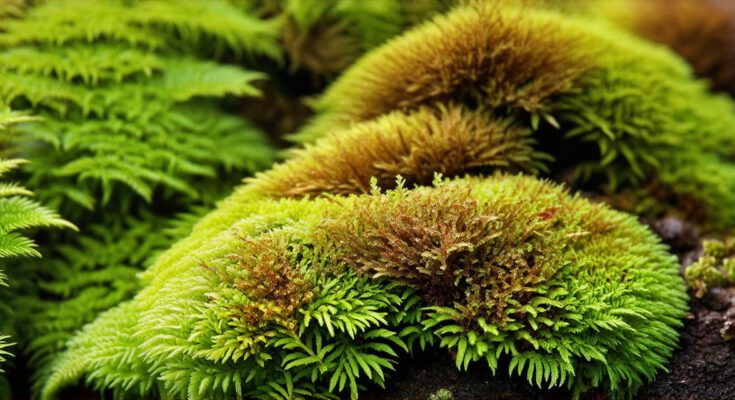Cryptogams: Definition and Overview
Cryptogams are non-flowering plants that lack specialized structures for the production of flowers, seeds, or other reproductive organs. They include a wide variety of organisms such as fungi, mosses, liverworts, hornworts, and lichens. These plants are named after the Greek words “kryptos,” meaning hidden, and “gamos,” meaning marriage, due to their reproductive structures that are not visible to the naked eye.
Cryptogams play a crucial role in the ecosystem as they are responsible for breaking down dead plant material, recycling nutrients back into the soil. They also serve as a primary food source for many animals, including insects and small mammals. In addition, cryptogams can be used for medicinal purposes, with some species containing compounds that have been shown to have anti-inflammatory and antimicrobial properties.
Types of Cryptogams
There are several types of cryptogams, each with its unique characteristics and functions within the ecosystem. Let’s take a closer look at some of them:
Fungi
Fungi are one of the most diverse groups of cryptogams, with over 300,000 known species. They can be found in almost every environment, from soil to water and even on the surface of other plants. Fungi obtain their nutrients by decomposing dead plant material or forming mutualistic relationships with other organisms, such as plants and animals. Some fungi also have parasitic relationships with other living organisms, where they obtain nutrients at the expense of their host.
Mosses
Mosses are small, non-vascular plants that lack specialized structures for the transport of water and nutrients. They can be found in a variety of environments, including forests, deserts, and even on the surface of other plants.
Mosses obtain their nutrients by absorbing them directly from the soil or water. They also play an important role in the ecosystem as they help to stabilize soil and prevent erosion.
Liverworts
Liverworts are another group of non-vascular plants that are found in a variety of environments, including forests, rocky areas, and even on the surface of other plants. They obtain their nutrients by absorbing them directly from the soil or water.
Like mosses, they also play an important role in the ecosystem as they help to stabilize soil and prevent erosion.
Hornworts
Hornworts are small, non-vascular plants that can be found in a variety of environments, including forests, deserts, and even on the surface of other plants. They obtain their nutrients by absorbing them directly from the soil or water.
Like liverworts and mosses, they also play an important role in the ecosystem as they help to stabilize soil and prevent erosion.
Lichens
Lichens are unique organisms that consist of a symbiotic relationship between a fungus and a photosynthetic partner, such as an alga or cyanobacterium. They can be found in a variety of environments, including forests, deserts, and even on the surface of other plants.
Lichens obtain their nutrients by decomposing dead plant material and absorbing them directly from the soil. They also play an important role in the ecosystem as they help to stabilize soil and prevent erosion.
Characteristics of Cryptogams
Cryptogams have several unique characteristics that set them apart from other plants. Let’s take a closer look at some of them:
- Non-vascular plants
- Reproductive structures



